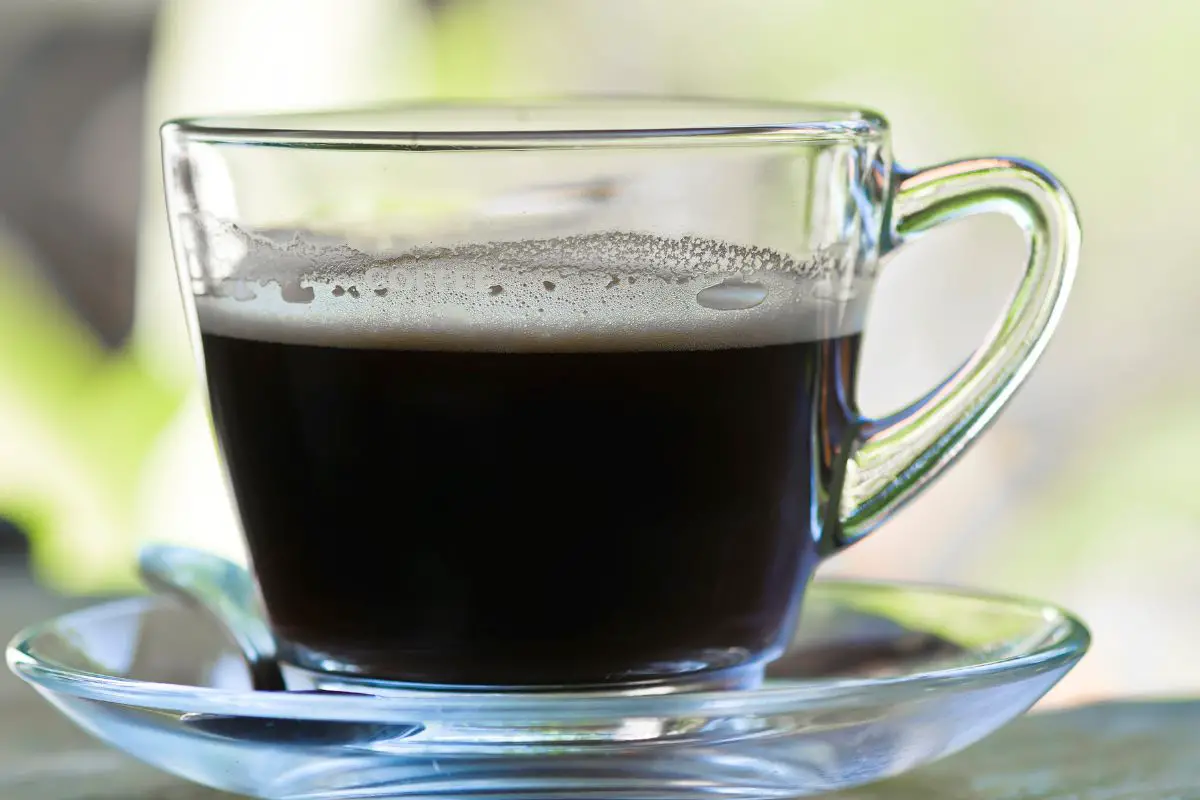In the vast and intricate world of coffee, two prominent contenders stand out: cappuccino and americano. These beverages, with their distinct origins and preparation methods, offer a unique experience to coffee enthusiasts.

Like contrasting brushstrokes on a canvas, cappuccino and americano paint a vivid picture of the diverse flavors and preferences that exist in the realm of coffee.
With origins rooted in Italian and American coffee cultures, cappuccino and americano showcase the artistry and precision of their respective preparation processes. While cappuccino, traditionally made with equal parts espresso, steamed milk, and milk foam, boasts a creamy texture and rich flavor profile, americano, created by diluting espresso shots with hot water, offers a bolder and more straightforward taste.
Beyond their preparation, these beverages also differ in terms of caffeine content, with cappuccino typically containing less caffeine than americano. Moreover, both cappuccino and americano allow for various customizations, enabling coffee lovers to tailor their drink to their liking.
This article aims to delve into the nuances of cappuccino and americano, exploring their origins, ingredients, taste, caffeine content, popular variations, and ultimately assisting readers in making an informed choice between the two.
So, grab a seat, sip a cup of your preferred brew, and embark on this journey through the captivating world of cappuccino and americano.
Key Takeaways
- Cappuccino and americano are two prominent contenders in the world of coffee.
- Cappuccino is traditionally made with equal parts espresso, steamed milk, and milk foam.
- Americano is created by diluting espresso shots with hot water.
- Cappuccino has a creamy texture and rich flavor profile.
The Origins of Cappuccino and Americano
The origins of cappuccino and Americano can be traced back to Italy and America, respectively. Cappuccino, a popular Italian coffee beverage, is believed to have been named after the Capuchin friars due to the similarity in color between the coffee and the Capuchin monks’ habits. It is traditionally made with equal parts of espresso, steamed milk, and milk foam. Cappuccino gained popularity in Italy during the early 20th century and eventually spread to other parts of the world.
On the other hand, Americano, as its name suggests, has its roots in America. It is believed to have originated during World War II when American soldiers stationed in Italy found the local espresso too strong for their taste. To mellow down the intensity, they started diluting espresso shots with hot water, creating a milder coffee beverage that became known as Americano. This drink gained popularity among American soldiers and eventually made its way back to the United States.
The ingredients and preparation process for cappuccino and Americano differ significantly. While cappuccino requires equal parts of espresso, steamed milk, and milk foam, Americano is made by diluting espresso shots with hot water. Understanding the origins and differences between these two iconic beverages sets the stage for a deeper exploration of their individual characteristics and flavors.
The Ingredients and Preparation Process

Cappuccino is a traditional Italian coffee beverage consisting of equal parts espresso, steamed milk, and milk foam.
The preparation process involves extracting a shot of espresso and then combining it with steamed milk, followed by a layer of milk foam on top.
In contrast, an Americano is made by diluting a shot of espresso with hot water, resulting in a milder flavor profile.
Cappuccino – espresso, steamed milk, and milk foam
Espresso-based beverages typically consist of a carefully balanced combination of espresso, steamed milk, and milk foam. The espresso serves as the foundation of the cappuccino, providing a strong and concentrated flavor. The steamed milk adds a creamy and smooth texture, while the milk foam contributes a light and airy element.
To further understand the composition of cappuccino, the following table provides a breakdown of the ingredients and their respective proportions:
| Ingredient | Proportion |
|---|---|
| Espresso | 1 shot |
| Steamed Milk | 1 part |
| Milk Foam | 1 part |
The careful preparation of these components results in a harmonious blend that is both rich in flavor and visually appealing. The next section will explore the contrasting composition of an americano, which consists of espresso and hot water.
Americano – espresso and hot water
Contrasting the composition of an americano, the beverage is crafted from a combination of espresso and hot water, resulting in a distinct flavor profile. Unlike cappuccino, which incorporates steamed milk and milk foam, americano focuses solely on the espresso base.
The inclusion of hot water dilutes the espresso, creating a milder and less concentrated taste compared to other espresso-based drinks. This dilution also affects the texture, as americano tends to have a thinner and lighter mouthfeel.
The absence of milk in americano makes it a suitable option for those who are lactose intolerant or prefer a dairy-free alternative. Furthermore, the simplicity of the americano’s composition allows the espresso’s unique characteristics to shine through, highlighting its inherent acidity, bitterness, and aroma.
Transitioning to the subsequent section exploring the taste and texture differences between cappuccino and americano, it is important to delve into their individual profiles.
The Taste and Texture Differences
The taste and texture of a cappuccino and an Americano differ significantly due to their distinct brewing methods and ingredient ratios.
A cappuccino is made by combining equal parts of espresso, steamed milk, and milk foam, resulting in a rich and creamy beverage. The espresso provides a strong and bold flavor, while the steamed milk adds a smooth and velvety texture. The milk foam on top adds a light and airy element, enhancing the overall mouthfeel of the cappuccino.
On the other hand, an Americano is made by diluting espresso with hot water. This results in a milder and less concentrated taste compared to a cappuccino. The addition of hot water also gives the Americano a thinner and more watery consistency. While the Americano still retains the bold flavor of espresso, it lacks the creamy texture and frothy foam present in a cappuccino.
The taste and texture of a cappuccino and an Americano are distinct due to their different brewing methods and ingredient ratios. The cappuccino offers a rich and creamy experience, while the Americano provides a milder taste and thinner consistency.
Moving on to the next section about the caffeine content comparison…
Caffeine Content Comparison
Is there a significant difference in caffeine content between cappuccino and americano?
This is a question of interest for coffee enthusiasts who are concerned about their caffeine intake.
Cappuccino is traditionally made by combining equal parts of espresso, steamed milk, and milk foam, while americano is prepared by diluting espresso with hot water.
Due to the dilution process, americano generally has a higher volume than cappuccino, which may lead some to assume that it contains more caffeine.
However, the caffeine content in these beverages primarily depends on the amount of espresso used. In general, a single shot of espresso contains around 63 milligrams of caffeine.
Therefore, both cappuccino and americano with a single shot of espresso would have a similar caffeine content.
It is worth noting that variations in the size and strength of the espresso shots used can influence the caffeine content. Furthermore, the addition of extra shots or other caffeinated ingredients, such as chocolate or flavored syrups, can also increase the caffeine content.
Moving forward, let us explore the popular variations and customizations of these coffee beverages.
Popular Variations and Customizations
Moving on from the caffeine content comparison, let us now delve into the popular variations and customizations of cappuccinos and americanos. These classic espresso-based beverages have gained popularity worldwide, and their adaptability has allowed for numerous variations to suit different tastes and preferences.
- Flavorings: One can add a variety of flavorings to both cappuccinos and americanos, such as vanilla, caramel, or hazelnut syrup. These additions enhance the taste and offer a delightful twist to the original beverage.
- Milk alternatives: For those with dietary restrictions or preferences, both cappuccinos and americanos can be made with milk alternatives like almond, soy, or oat milk. These alternatives provide a creamy texture while catering to lactose-intolerant individuals or those looking to reduce their dairy intake.
- Toppings: To elevate the visual appeal and flavor profile, cappuccinos and americanos can be adorned with toppings. Common choices include cocoa powder, cinnamon, or even whipped cream. These additions add a touch of indulgence and enhance the overall drinking experience.
As we explore the intricacies of cappuccinos and americanos, it becomes evident that these beverages offer a wide range of customization options. Now, let us further examine the factors to consider when choosing between the two drinks, taking into account various aspects such as taste, strength, and personal preferences.
Choosing Between Cappuccino and Americano

When deciding between the two espresso-based beverages, individuals must carefully consider their taste preferences, desired strength of the drink, and personal inclinations. Cappuccino and Americano differ in various aspects, which can help individuals make an informed decision.
The table below provides a comparison between cappuccino and Americano based on taste, strength, and customization options:
| Taste | Strength | Customization Options | |
|---|---|---|---|
| Cappuccino | Creamy, with a hint of sweetness | Moderately strong | Limited options |
| Americano | Bold and intense | Strong | Versatile options |
Cappuccino is known for its creamy texture and subtle sweetness, making it a popular choice for those who prefer a milder taste. On the other hand, Americano offers a bold and intense flavor, suitable for individuals who enjoy a stronger coffee experience.
In terms of strength, cappuccino is moderately strong, as the espresso shots are diluted with steamed milk and milk foam. Americano, on the other hand, is strong as it consists of espresso shots topped with hot water.
When it comes to customization options, cappuccino has limited choices as it is traditionally served with equal parts espresso, steamed milk, and milk foam. Americano, however, offers versatile options as individuals can add additional ingredients like milk, flavor syrups, or whipped cream.
Ultimately, the choice between cappuccino and Americano depends on individual preferences. Those who enjoy a creamy and mildly sweet taste may opt for cappuccino, while individuals seeking a strong and bold flavor may prefer Americano.
Frequently Asked Questions
Can cappuccino be made decaffeinated?
Cappuccino can indeed be made decaffeinated. This process involves using decaffeinated coffee beans or removing the caffeine from regular beans. It is a meticulous and careful process, ensuring that those seeking a caffeine-free option can enjoy their cappuccino without compromising safety.
Are there any health benefits associated with drinking cappuccino or americano?
There are potential health benefits associated with drinking cappuccino or americano. Both beverages contain caffeine, which can improve cognitive function and alertness. Additionally, the milk in cappuccino provides calcium and protein, while americano offers hydration.
Can I add flavors or sweeteners to my cappuccino or americano?
Yes, flavors and sweeteners can be added to cappuccino or americano. However, it is important to consider the potential health implications of adding excessive amounts of sugar or artificial additives.
Is it possible to make cappuccino or americano at home without an espresso machine?
It is possible to make both cappuccino and americano at home without an espresso machine. For cappuccino, you can use a stovetop espresso maker or a coffee machine with a milk frother. For americano, you can simply brew strong coffee and dilute it with hot water.
How do cappuccino and americano differ in terms of cost at coffee shops?
The cost of cappuccino and americano at coffee shops can vary depending on factors such as location, quality of ingredients, and overhead costs. Prices typically range from $2 to $5 for a standard serving.
Conclusion
In conclusion, the comparison between cappuccino and americano reveals distinct differences in terms of origin, ingredients, preparation process, taste, texture, and caffeine content.
While cappuccino showcases the smooth combination of espresso, steamed milk, and frothed milk, americano highlights the simplicity of espresso diluted with hot water.
These variations offer unique experiences and cater to different preferences.
To illustrate this, imagine a canvas where cappuccino represents a vibrant and intricate painting, while americano embodies a minimalist and refined sketch.
Each has its own allure, making the choice between them a matter of personal taste.
Related articles: